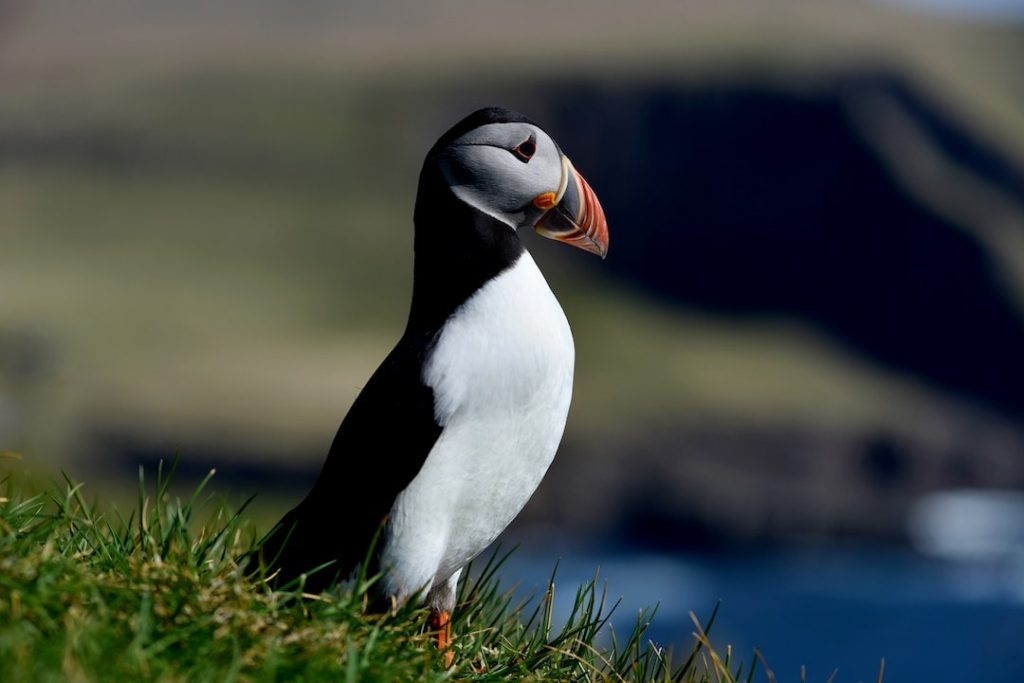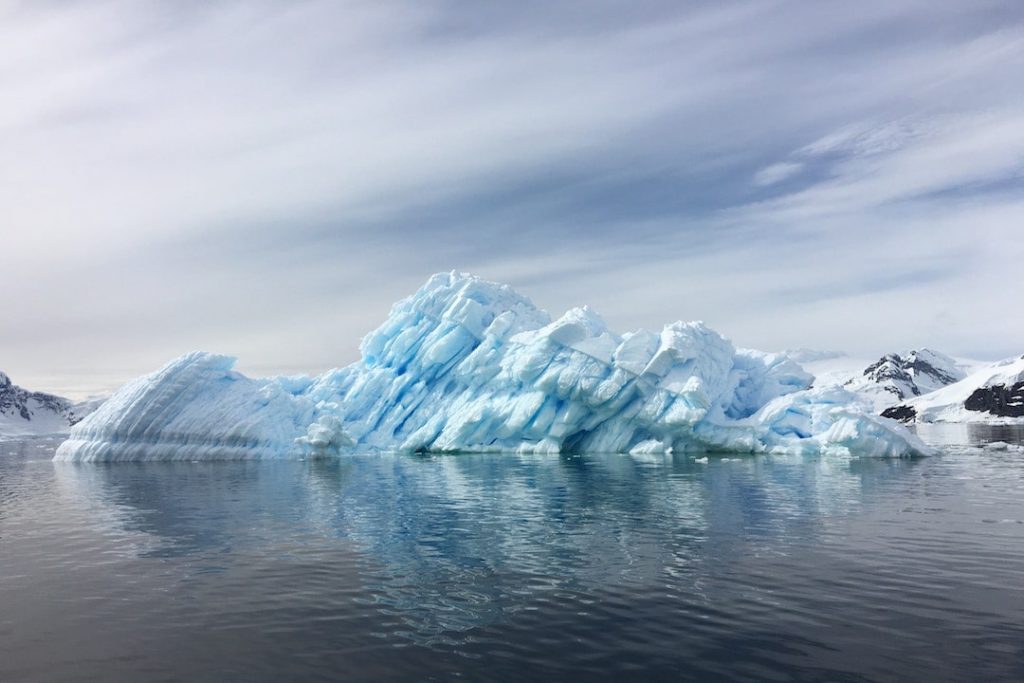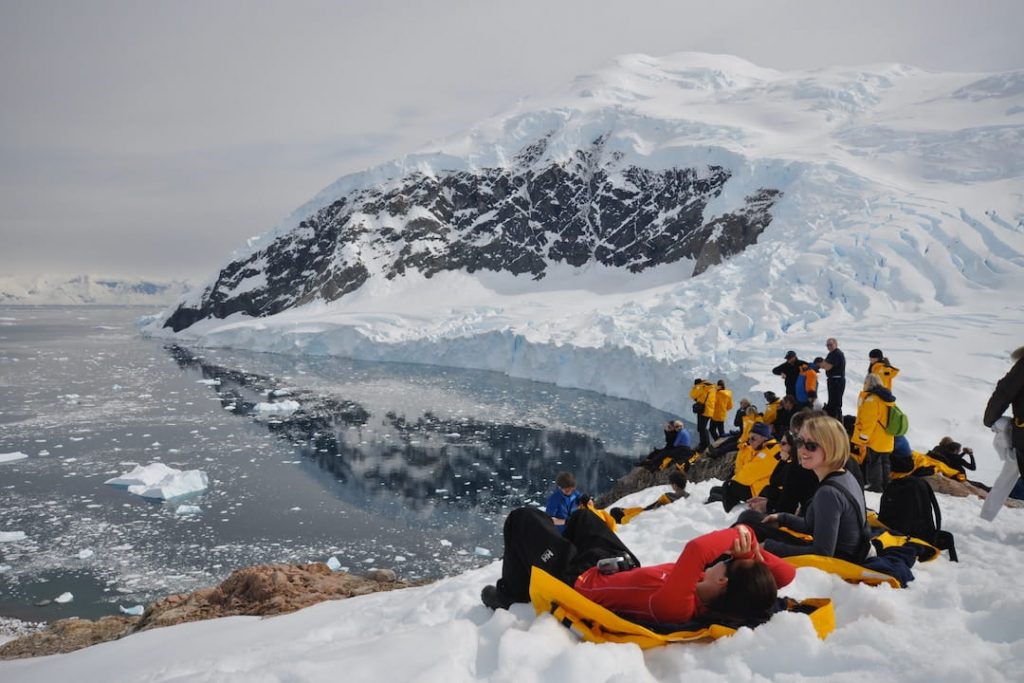Are you a polar bear lover, and itching to experience the Northern Lights? Or would you rather chill with the penguins (pun intended!) and explore a land mostly uninhabited?
While the two poles have more similarities than being really cold and ice-covered, they also have stark differences that make their cruising experiences vastly dissimilar. Knowing what each has to offer will help you understand which polar cruise is best for you and what you’re looking for. Fans of flora and fauna, for example, will definitely appreciate the Arctic’s offerings more, while very adventurous souls will find a unique thrill in exploring the Antarctic’s icy desert.
To help you choose the right polar cruise for your next jaunt, we are here to explore both.
| The Arctic | The Antarctic | |
| Size | 14.5 million kilometres squared | 14 million kilometres squared |
| Coldest Temperature | Around -34 degrees Celsius | Around -49 degrees Celsius |
| Population | Roughly 4 million | About 4,000 in summer, and 1,000 in winter |
| Animals | Polar bears, puffins, and arctic foxes | Penguins, whales, and seals |
Why Cruise in the Arctic?
Sitting right on the North Pole, the Arctic is a large area of land and water that encompasses the Arctic Ocean, Greenland, a few northern islands, and parts of Europe, Asia, and North America.
It’s a place that amazes with stunning sights, from sweeping landscapes and wandering wildlife to the legendary Northern Lights that have drawn many travellers to Norway, Finland, and Alaska. It’s also home to a number of settlements and indigenous populations with vibrant cultures, so exploring the area also means rubbing elbows with locals and immersing yourself in their amazing cultures.
As many places in the Arctic have permanent populations, you will won’t feel too isolated or far from civilization.

What Should I Expect When Cruising the Arctic?
A visit to the Arctic doesn’t mean you will be abandoning comfort, even though you’ll be in some of the coldest places on Earth. In fact, the Arctic is home to some of the world’s best hotels, as well as most luxurious cruise ships.
Cruising the Arctic typically involves many experiences spanning several countries, some of which—Iceland, Norway, and Greenland, for example—boast incredibly extraordinary landscapes, the friendly locals, and the most spectacular night sky displays.
Many Arctic cruises offer a mix of land excursions that visit attractions and historical sites as well as the opportunity to see wildlife, while a few offer a particular focus, like sea-and-land wildlife viewing. Choose an Arctic cruise that offers a good selection of the experiences you want, and the level of comfort you expect.
Weather Conditions in the Arctic
To say that the Arctic is cold is an understatement. Temperatures in Greenland can drop down to -50 °C in Northern Finland and down to -65 °C in Greenland during the winter months. The days are also shorter, and the sun may not rise for weeks, even months. Winter months are the best months to see the Northern Lights
In the summertime, temperatures can be mild, and you will enjoy a bit of sunshine. In Greenland, it doesn’t get warmer than 10 °C; downright balmy for Arctic standards. In Norway, it does get a little warmer, and temperatures can rise to up to 20 °C Summer is definitely the best time to cruise to the Arctic.
When going on a winter cruise, pack your suitcase with extreme cold-weather clothing for your head all the way to your toes, especially if you are planning on joining excursions. Many Arctic cruises do have gear and equipment on-hand for guests, but they likely won’t provide your jackets and boots.
For summer trips, Arctic cruise companies recommend breathable fabrics you can layer, windproof jackets, and waterproof boots.

What Permits, Visas, and Vaccinations Do I Need to visit the Arctic?
Permits
Unlike Antarctica, you do not need a permit to go on an Arctic cruise or join day excursions.
Visas
Travellers with US and Canadian passports do not need a visa when visiting Greenland, Iceland, Finland, and the Scandinavian countries for up to 90 days. Such is also the case for UK and Australian passport holders. For all other nationalities, please check with the embassies in your countries. Keep in mind that some Arctic cruise companies are able to assist you with visa processing.
Vaccinations
Make sure you are up to date with your routine vaccinations before your travel. That includes measles-mumps-rubella, diphtheria-tetanus-pertussis, varicella, and polio. A flu shot might also come in handy.
What to See and Experience on an Arctic Cruise?
Attractions
Different Arctic cruises offer different stops, but here are the best and most popular ones.
- Tromso – The historic city, home to centuries-old wooden houses and the Arctic Cathedral, is made popular by the Northern Lights that paints its night sky from September to March.
- Lofoten Islands – The Lofoten archipelago is famous for its beautiful land and seascapes as well as the red-painted buildings dot its small fishing villages. Hiking, fishing, scuba diving, ocean rafting, and even surfing are the favourite pastimes here for visitors.
- Svalbard Islands – The Norwegian archipelago are some of the world’s northernmost inhabited places. Whether it’s dog sledding and admiring its spectacular landscapes or dining at the world’s northernmost sushi restaurant, there’s much to do on these islands.
- Scoresby Sound – Greenland’s famous fjord system, one of the largest in the world, is home to the ruggedly beautiful Ittoqqortoormiit, a famous Greenlandic settlement visited by travellers for its wildlife. It’s also home to a number of stunning iceberg formations.
- Hornstrandir – Mostly uninhabited, this gorgeous Icelandic peninsula is home to the adorable Arctic fox. Visitors come to see its wildlife, which also includes birds, and do a day hike.

Animals
Wild polar bears, which make appearances in Svalbard, northernmost Canada, Alaska, Siberia, Iceland, and Greenland, as well as the adorable puffins in Iceland and Greenland are popular sightings amongst Arctic travellers. So are the Arctic foxes in Iceland, Scandinavia, and Greenland.
Opportunities to see marine wildlife like whales and walruses, other species of birds, and land mammals like wolves, hares, lemmings, reindeer, and oxen are also on hand.
Experiences
An Arctic cruise offers many once-in-a-lifetime adventures you’ll only experience in the region, from watching the Northern Lights display and sailing through an epic fjord, to taking a glacier walk and visiting small villages to see the local culture. There are also hiking trails to take, UNESCO World Heritage and historic sites to visit, and local foods to sample.

What to Do After Your Arctic Cruise?
With Iceland, Norway, Finland, Greenland, and Sweden being popular holiday spots, post-cruise trips are more than a possibility and quite effortless to plan. There’s Iceland’s Golden Circle and the Blue Lagoon, for example, or Stockholm’s popular attractions, or Greenland’s hot springs and Inuit settlements. The choices are almost endless!
Why Cruise in the Antarctic?
A cruise to the Antarctic is a life-changing trip only a lucky few get to experience. The fifth largest continent is marked with rugged, breathtaking desert landscapes and six species of adorable penguins who are, essentially, the region’s only permanent settlers.
An expedition in the Antarctic, which typically takes off from Argentina’s resort town of Ushuaia, isn’t for the delicate with its craggy peaks and ice sheets dotted with fallen meteorites. Yet for the adventurous, it’s the ultimate destination. To mingle with locals there means hanging out with penguins, seals, and whales, or chatting with scientists about their research. To hike out there means to walk on glaciers and through icy wilderness.
As there are no permanent human settlements on the continent, get ready to find yourself exploring a remote, rough land.

What Should I Expect When Cruising the Antarctic?
Antarctic cruises take anywhere from 10 to 14 days, typically starting its journey in Ushuaia, Argentina and crossing the Drake Passage, which separates South America from Antarctica’s South Shetland Islands.
The journey is a spellbinding one, full of views rarely seen by most people, wildlife sightings that will stay with you for a lifetime, and research stations ready to share their knowledge. Photo opportunities abound, of course, from the famous “Kodak Gap” in the Gerlache Strait to the adorable penguins waddling about and whales feasting on krill. And there’s a lot to explore—bays, landing sites, icy channels.
Choose your own adventure. Just remember that modern medical facilities are not readily available, so practice safety and common sense at all times.
Weather Conditions in the Antarctic
The Antarctic is both the coldest place on Earth, with temperatures reaching −97 °C at its coldest sites, and the driest, receiving only about 16cm of precipitation annually. It’s certainly not for the faint-hearted.
However, the coast is a lot warmer and most Antarctic cruise journeys fall between December and March when the continent is experiencing its summer months and the days are their warmest (from -1 to 1 °C). Many come in December and January for the long days (up to 20 hours) and the hatching penguin eggs. Some come in the late summer to see the growing penguin chicks as well as the whales.
Packing many layers of clothing, as well as a windproof, extreme cold-weather parka is not a recommendation, but a requirement. Comfortable, waterproof hiking shoes are also necessary, as are sunglasses and sunscreen, because there’s a huge hole in the ozone layer over the continent.

What Permits, Visas and Vaccinations Do I Need to visit the Antarctic?
Permits
All citizens of the 46 countries that signed the Antarctica Treaty will need a permit to visit the continent. That includes visitors from the US, the UK, Australia, and Canada. Most cruise ship operators will obtain the permit for their passengers, but it’s always good to double to check before the actual trip.
Visas
As Antarctica doesn’t belong to any country, there are no visa requirements for visitors travelling there. However, visas may be required in countries where the ship is departing from and visiting en route. These countries include Chile and Argentina. Citizens of the United States, Canada, the United Kingdom, and Australia do not require a visa for visits 90 days or more.
Vaccinations
Visitors do not require immunizations when visiting the Antarctic, but, much like the visa situation, the port countries will have immunization requirements. Check the CDC website for these requirements.
What to See and Experience on an Antarctic Cruise?
Attractions
- Deception Island – Part of the South Shetland archipelago, this island is essentially the caldera of an active volcano. It’s home to a couple of research stations and an abandoned whaling station.
- Gerlache Strait – Filled with beautiful sceneries and seascapes and abundant with wildlife, this area is a destination in and of itself. Places of interest include Paradise Bay, home to glacier mountains, icebergs, and penguin colonies; and Lemaire Channel, or the “Kodak Gap.”
- Polar Plunge – Head on over to the center of Deception Island where the flooded caldera is and take a quick dip in its cold yet invigorating waters. Don’t worry; there are guides standing by if you get in trouble.
- Neko Harbour – A small bay in Andvord Bay, this harbour is a great spot to see Gentoo penguins, fur and Weddell seals, as well as humpback whales and Skua birds.
- Port Lockroy – If a visit to Wienke Island in Port Lockroy is in the stars, stop by the museum and science base as well as the Penguin Post Office so you might send postcards to your family and friends all the way from Antarctica.

Animals
The Antarctic may be a desert, but that doesn’t mean it’s devoid of life. It is, in fact, brimming with land and marine animals, which means a wildlife viewing on an Antarctic cruise is more than necessary. It is, after all, home to six species of adorable penguins, whales, seals, and many species of birds.
Experiences
A diverse selection of experiences can be had in the southernmost part of the world, from easy ones like whale watching to the more adventurous ones like Scuba diving and drinking vodka at the Vernadsky Research Base, home to the southernmost bar in the world.
What to Do Post Cruise?
As most Antarctic cruises start and end in Argentina, you have the entirety of South America to explore after the cruise. One of the most popular places that people visit is the Tierra del Fuego National Park in Patagonia, but Chile and Uruguay are also great places to explore.
Cruises like this are often a once-in-a-lifetime adventure, so it’s important to research carefully and select the best option for you. Always ask questions and make sure you have a good idea of what your tour will involve, and then all there’s left to do is get excited for the experience of a lifetime!


